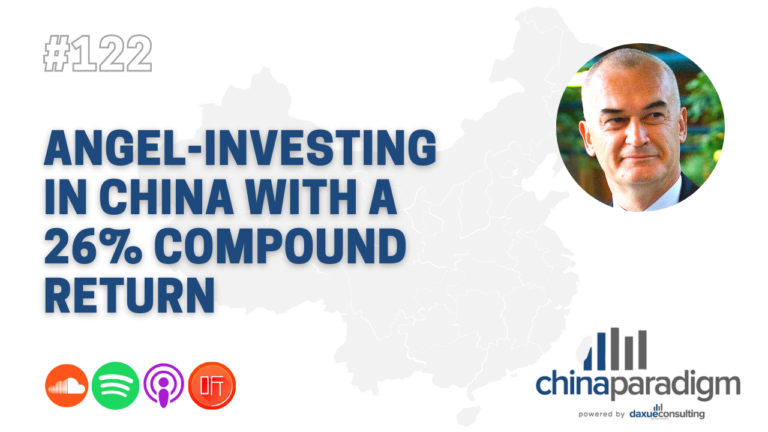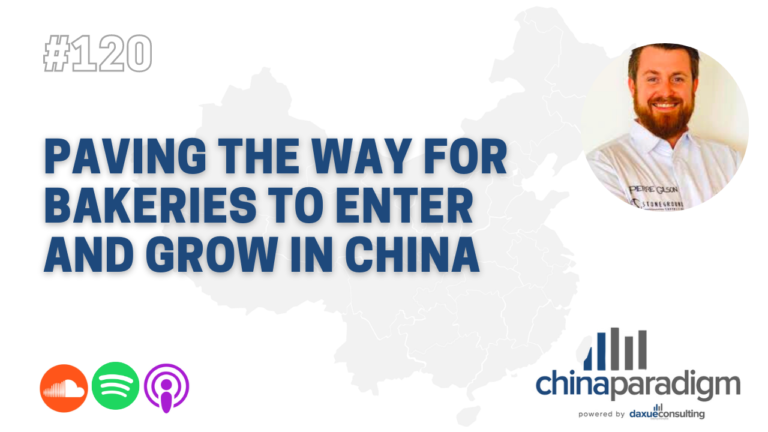China Paradigm interviewed Sandrine Delabrière, an experienced marketing and innovation consultant who came to China and launched Pourquoi Pas. With Sandrine Delabrière, explore the cooking business in China and learn more about how China innovation’s approach is different from the Western one.
Enter the cooking business in China: an industry full of opportunities
Sandrine Delabrière is a consultant and expert mainly in marketing and innovation with over 20 years of experience in several major companies. Brilliant during her student life, she graduated from two leading schools worldwide and obtained an MBA in Marketing, Strategy, and Management in both HEC and McGill University.

Yet, it is only several years later that Sandrine Delabrière finally entered the cooking business in China. Indeed, right after her studies, she first worked as a brand manager and marketer in several industries, from the Chemical one with GSK to the food industry with Danone for instance. In 2010, she decided to set up her own company and launched Pourquoi Pas, a consultancy dedicated to helping companies to tackle marketing, innovation, and strategic challenges.
Nevertheless, after working in multiple places all over the world, Delabrière moved to China four years ago, first in Beijing before going to Shanghai. Influenced by her international background mixed to her French native culture, her experience in the food industry and her passion for food, she progressively started to think about the cooking business in China.
Thus, for now, more than four years, Delabrière has been helping companies to bring innovation through cooking workshops in China. In the meantime, in 2017, she wrote “A Mediterranean cookbook” giving healthy recipes with nutritional comments from Stella Chan Marinaro, a Canadian Nutritionist. This obviously reinforced her legitimacy in the cooking business in China.
Bring innovation through cooking workshops: a disruptive method in China
Innovation is a pretty hard skill to develop. While marketing and strategy are, for example, made of tangible and concrete knowledge, innovation cannot be learned the same way. It needs to be worked on to be developed, the same creativity does.
Yet, with her visionary spirit, Sandrine saw plenty of similarities between innovation and cooking and though it could be a nice and successful idea to bring innovation through cooking workshops.
“[The cooking field] is an area where all the skills that are needed for innovation can be experienced, and also, all the barriers that I could see my clients bumping into, all of those we can break down in the context of the kitchen. The fear of failing is one of the biggest barriers to innovation and culture in China. And in the context of the kitchen, everything becomes so familiar and so playful, everyone has a kitchen, everyone has been in the kitchen at some stage.”
From Sandrine’s point of view, Cooking is about playing with ingredients and putting them together, looking for the best associations of colors, smells, tastes or shapes, to create a final dish, a tangible and real product with a useful purpose: to feed and give pleasure. This definition literally describes the word “innovation” and shows why bringing innovation through cooking workshops is the crossroad of two fields that can perfectly be combined.
“You start with separate ingredients and after 45 minutes you have a dish that can feed people. It’s there, it exists and it’s useful.”
Moreover, since there is an always increasing demand for good food and cooking business in China is growing, these two fields perfectly fit together. But in order to bring innovation through cooking workshops, Sandrine has to take into account the cultural specificities and adapt to the China innovation’s approach.
Differences between Western and China innovation’s approach
Like many other fields, cultural differences lead to different methods and perceptions of innovation in China. In some ways, China’s innovation approach differs a lot from the Western way, especially in the thinking path. Indeed, while Western people are often more on a secure and careful road with long-term forecasts, China innovation’s approach tends to be a go-to-market one, where the main goal is to innovate quickly and think about and solve the problems after.
“In the West we need plans, and usually senior leadership has asked for a clear plan, it can be even up to a five-year plan. This would be – this is totally exotic to a Chinese mind. How on earth will you be able to do a five-year plan when you don’t even know what in five months your own market will look like because things change that fast here.”
According to Sandrine Delabrière, China innovation’s approach is fully different and way more fluid. Of course, Research & Development is still part of the innovation process but while Western companies tend to work on it with plenty of tests, Chinese companies are more willing to combine R&D with agile methods.
But where does it come from? The essential purpose of innovation for companies is to be in advance and to be competitive to thrive and prosper in a market. Actually, businesses need to follow the speed of society’s development. Thus, with the crazy fast pace of Chinese society and its massive quick development, China innovation’s approach needs to be coherent with it.
Indeed, these last years, China invested a lot in the innovation field in order to make China the global leader in several industries. For instance, the 2018 report from the National Science Foundation shows the skyrocketing expenditures of China in R&D.

“China innovation’s approach and R&D investments”]
Of course, although R&D investment cannot describe China’s innovation approach by itself, it is a relevant indicator of the innovation path in China. Furthermore, it perfectly explains why Chinese companies innovate with a fast go to market strategy. Indeed, competition is rough in China. New players appear every day and many of them do not survive.
Yet, the same way we can ask ourselves who came first between the chicken and the egg, we can wonder if the fast pace of China has led to the current China innovation’s approach, or if the huge innovation investments led to the fast pace and growth of China.
Listen to this episode here:










